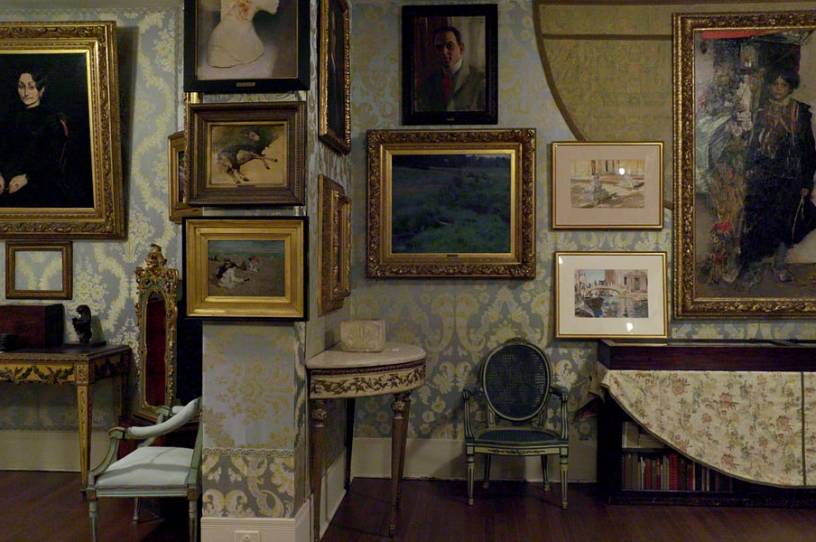The World’s Biggest Art Heist

True-crime junkies and art enthusiasts, rejoice: Netflix’s This is a Robbery: The World’s Biggest Art Heist offers the perfect union of both. The four-part docuseries, a recent passion project of brothers Nick and Colin Barnicle, unravels the sprawling jumble of suspects, red herrings, and dead ends tied up in the world’s largest art heist and Massachusetts’ most infamous unsolved crime.
Downtown Boston appears an unlikely venue for some of the world’s most renowned works of art. Yet the Isabella Stewart Gardner Museum, with an unassuming brick facade and proximity to the Boston Red Sox’s Fenway Park, boasts pieces from the 21st century BCE to the Italian Renaissance, from neoclassicism to impressionism—housing the works of artists such as Anthony Van Dyck, Giotto, Edgar Degas, and Sandro Botticelli. The museum’s namesake, a 19th century eccentric with a penchant for coquetry, willed her collection and its home to the public on the stipulation that it never be permanently altered.
Her final request was dispensed with in the early hours of March 18, 1990—St. Patrick’s Day— when two men dressed as police officers entered the museum, bound its security guards, and cut paintings from their frames for a brazen 81 minutes. The thieves made away with 13 pieces, including Rembrandt van Rijn’s Christ in the Storm on the Sea of Galilee and self portrait, Edgar Degas’ Three Mounted Jockeys, and Édouard Manet’s Chez Tortoni.
Empty gold frames adorn the wall as a permanent reminder of what was lost and what has yet to be found. The four installments feature a colorful slate of characters, each impacted by the unresolved case. The grief in the voices of the museum workers is easy to detect as they reminisce on the missing works, as is the frustration in the voices of law enforcement officers and journalists who spent the better part of their careers trying to recover the pieces.
“It was like a death in the family,” Anne Hawley, the museum’s first female director, said of the heist. “This was not a crime of opportunity. This was planned out,” said Tron Brekke, the first FBI agent on the scene.
Sweeping shots of the Gardner’s elaborate, European-inspired interior unfold in sharp relief to the overlaid Bostonian accents of the film’s cast, hinting to the world beyond the museum’s walls. Boston in the ‘90s was in the late stages of dismantling powerful warring families—with the Irish mafia in Southie and Charlestown and the Italian “La Cosa Nostra” in the center of town. The most credible theories surrounding the robbery posit that members of organized crime swiped the paintings as a bargaining chip, either to negotiate with to get their people out of prison sentences or to launder on the black market.
The multibillion dollar art and antiques industry, even in its legal form, has long operated with near-zero regulations, allowing disreputable groups and individuals to convert ill-gotten gains into legitimate investment portfolios. For more on how sanctioned friends of Putin wield the trade to gain access to the U.S. economy, check out a story I wrote on the topic last year.
But most theorize that the artwork never even left New England. In the decades-long search for the 13 missing pieces, hints popped up around the city and in surrounding areas—a woman claiming to have hung Chez Tortoni on her brother-in-law’s wall, a widow claiming her husband owned two of the paintings, etc.—eventually leading the feds to Hartford mob boss Bob Gentile. After a sting operation to entrap Gentile for another crime, however, the FBI came up short again.
All other individuals of interest either wound up imprisoned on other charges or dead—often of unnatural causes. The skeptic in me hypothesizes that the latter is not a coincidence, but be sure to watch to form your own theory.
On March 18, 2013, the 23rd anniversary of the heist, the FBI announced that it had uncovered the perpetrators of the break-in. But no names were officially released and the art was never located. Unfortunately for fans of satisfying endings, This is a Robbery is certainly without that. The last minute of the final episode reminds the viewers that a $10 million reward is still available and features each piece in successive order. With any luck, internet sleuths and amateur detectives can do what law enforcement couldn’t.